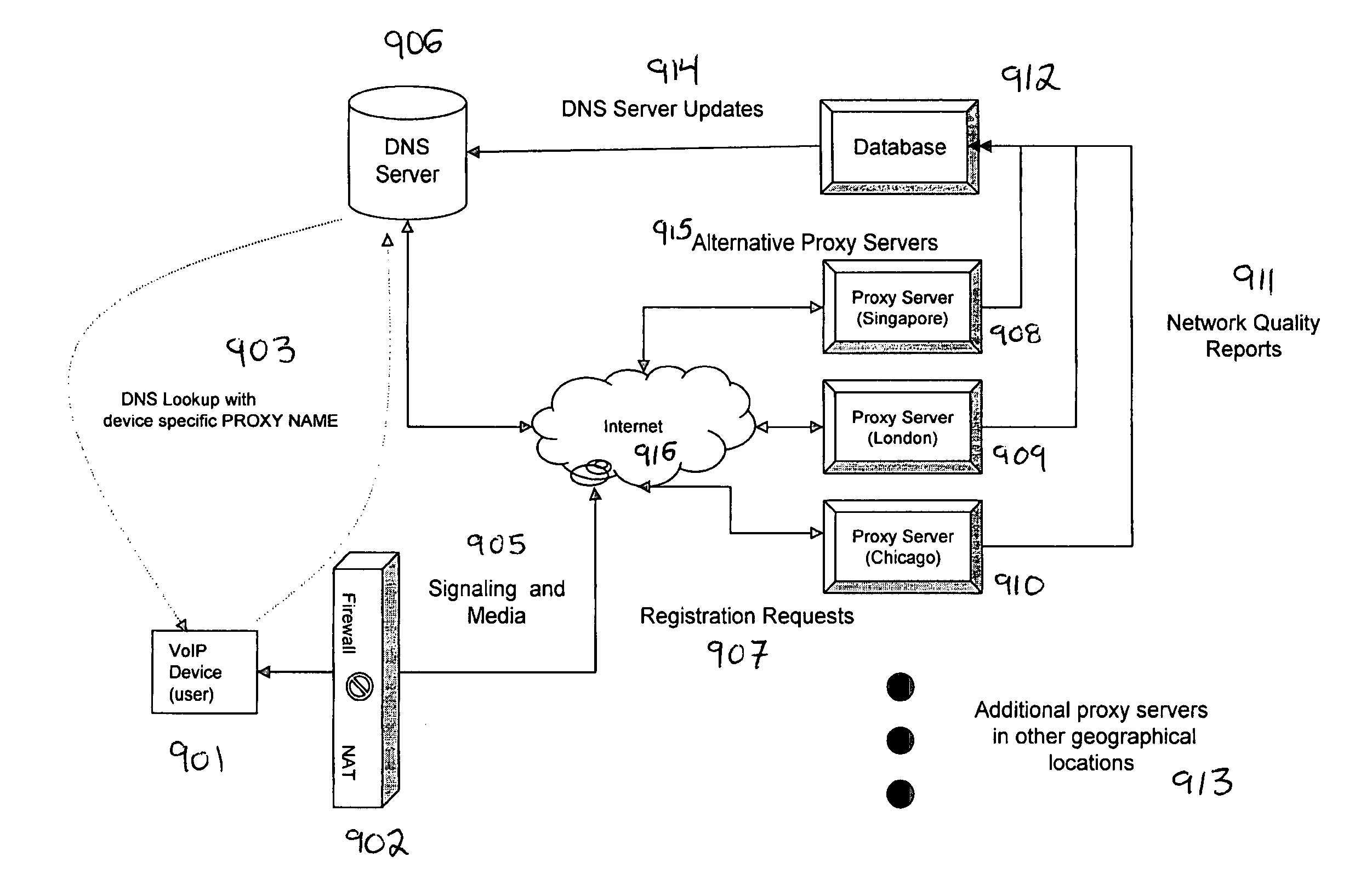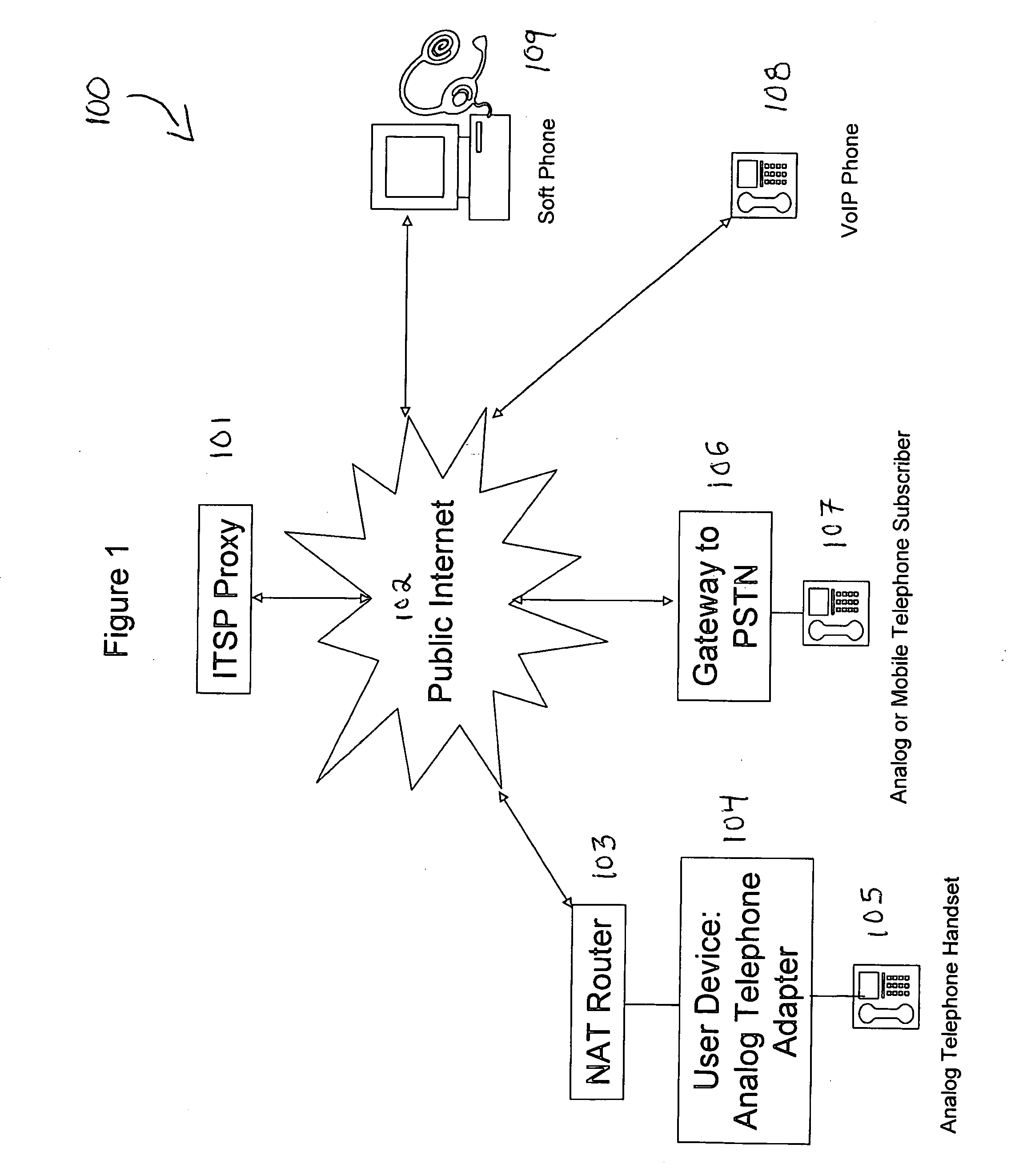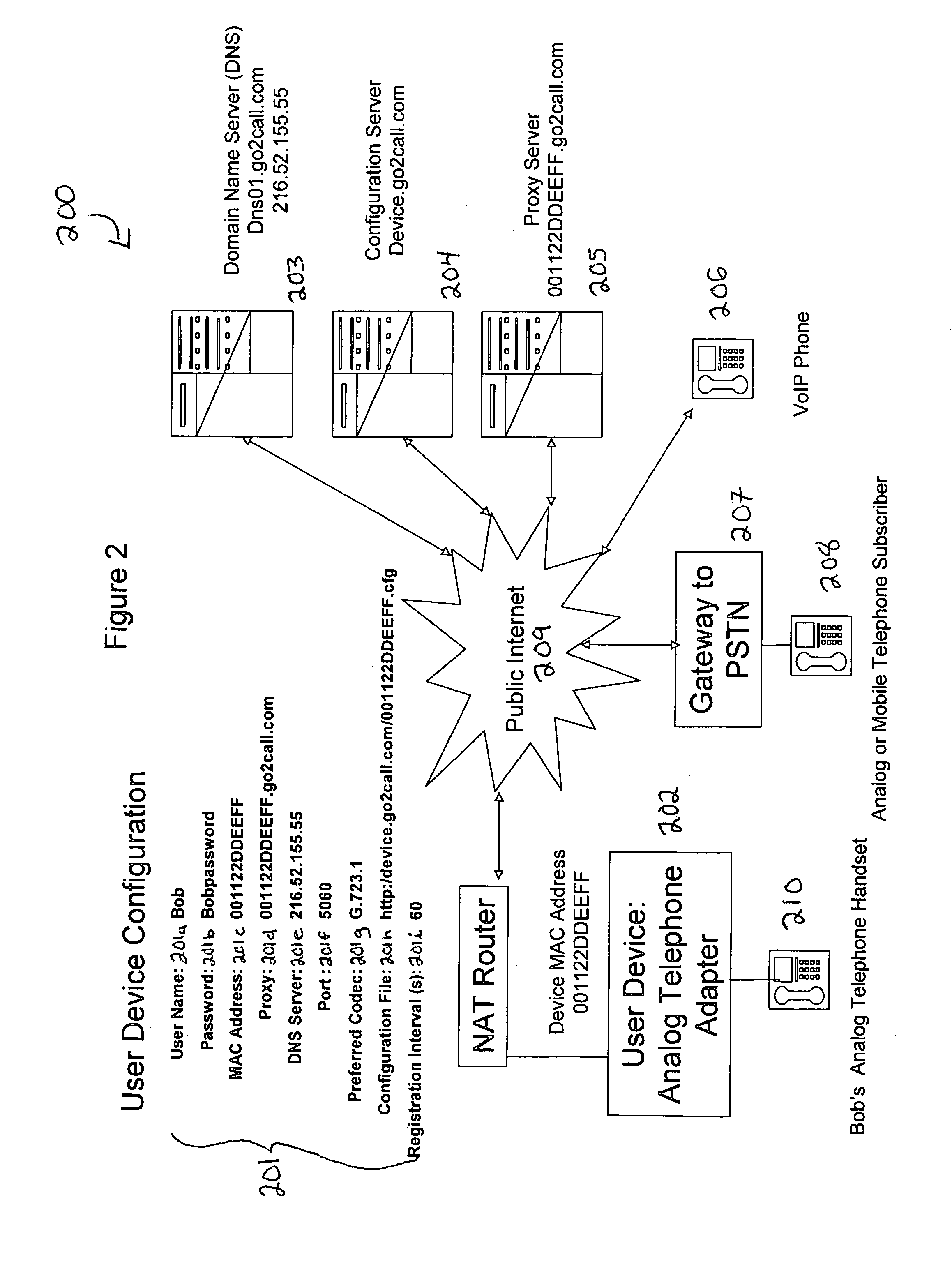The distributed nature of both end users and servers creates significant challenges to ITSPs in order to optimize the routing of the call for each
user device or
software application.
The optimal routing of calls through the Internet is very important to obtain high quality of the call, and improper routing will often result in delays, lost packets, insufficient bandwidth, and various distortions of the voice or video that are noticeable to one or both end users of a VoIP call or video session.
In general, these methods can enhance the quality of a call, although they do not provide a
server-based method for optimizing
call routing that is fully compliant with widely-implemented standards on user devices.
The above methods for improving voice quality are incomplete if the ITSP does not seek the optimal routing of the media from user devices through the Internet to their servers.
For example,
delay in hearing voice spoken at the distant device is primarily the result of the
network delay required to transmit the packets across the Internet.
This means that very often neither the
end user nor the ITSP has complete control over the routing of a VoIP call from end to end through the Internet.
In addition, significant variation in network quality can be introduced via congestion,
time of day or day of week, when an ISP changes their own routing rules, or occasionally upon significant network outages such as loss of power in a
data center or the breakage of undersea
fiber optic cables.
However, the simple geographical method for selecting servers can result in routing that is not optimized and results in lower voice quality.
Simple geographical methods also do not address the optimal selection of a
server if multiple servers are located within the region.
In this example, simple geographical rules are not helpful, since the PoPs and user devices belong to the same geographical region.
Another straightforward alternative to geographical routing would be to evenly distribute the user devices across available proxies, providing the benefit of distributing the load, but this alternative would not provide an optimal routing solution for each individual device.
The ITSP would like to specify the best server individually for every device on any given day, but simple geographical routing or uniform distribution will generally not provide an optimized solution.
However, these methods have several drawbacks for ITSPs, and do not leverage server-based solutions that rely entirely on widely-deployed VoIP protocols.
There are several issues with methods that rely upon PINGs or similar network probes from the
user device to measure network quality.
First, the methods require proprietary
programming on the device and do not leverage existing Internet
Engineering Task Force (IETF) VoIP standards such as Session Initial Protocol (SIP).
Worldwide, there are hundreds of models of IP phones and VoIP devices, and the vast majority does not have intelligence on the device to select a server with an optimized
route.
Second, PINGs are dropped by many ISPs, such as Saudi
Telecommunications Company in Saudi Arabia, which means that user devices on the network will not be able to readily measure the quality of routes to different servers.
Third, the introduction of pings specifically for the measurement of network quality results in unnecessary network traffic.
Fourth, PINGs or similar network probes from the
client do not readily support dynamic updates of the
list of servers that are monitored by the
user device.
However, probing the network from the ITSP servers still creates challenges that may result in less-than-optimal routing solutions.
Finally, the use of PINGs or server-based network probes generates unnecessary network traffic.
Although the server-based-PING solution bypasses the need for proprietary code on user devices, it introduces significant complexity in the downloading and applying of a new configuration file every time the ITSP adjusts routing for each individual device, which may be as frequently as several times a day in order to deliver the highest possible voice quality with rapidly changing
network conditions.
Although the “ideal” routing of the media for a call between two endpoints on the Internet may be the direct transmission of the media between the endpoints, in many cases the media cannot be directly transmitted because the endpoints reside behind NATs at
private IP addresses that are not routable across the Internet.
In addition, the user devices may not implement FEC or have compatible codecs, so the ITSP can enhance the call quality and completion rates by implementing FEC on the server or converting the media between two user devices that have implemented incompatible codecs.
Finally, although multiple schemes have been developed to support the direct transmission of media between user devices, such as the Internet
Connectivity Establishment (ICE), such schemes only optimally work if the devices for both parties of a call have implemented the same standard.
Millions of user devices currently deployed worldwide have not implemented ICE or other standardized techniques for the direct transmission of media between two devices connected to the Internet behind NATs.
 Login to View More
Login to View More  Login to View More
Login to View More 


